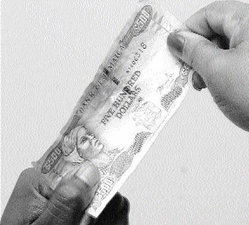Life after a loss
Published: Monday | November 9, 2009

Marsha Mitchell* was a member of one of the investment schemes which operated in Jamaica. The scheme collapsed and she lost her money. Marsha has heard of the Office of the Trustee in Bankruptcy (OTB) and would like to know more about the roles and functions of this office.
OTB is a department under the Ministry of Justice. It was established in 1937 under the Bankruptcy Act. Prior to 1937, the administration of bankruptcies in Jamaica was carried out by a section of the Administrator General's Department.
The OTB administers bankruptcies and liquidations and aims to provide a legal shelter for individuals and companies that are no longer financially viable, as well as protect creditors against unscrupulous debtors.
Under the Companies Act, the OTB is given the additional responsibility of administering companies that are being wound up through the courts, for which the trustee is appointed or constituted provisional liquidator. Section 342 also provides for the appointment of the trustee as receiver of such a company on behalf of debenture holders or other creditors.
Key functions of the OTB
Early intervention - Receiver/manager
Application may be made to the court for the trustee to be appointed receiver/manager of a debtor's business after a bankruptcy petition is filed. Because the appointment does not have to await the making of a provisional order in bankruptcy, this procedure offers early protection to creditors against the dissipation or concealment of assets by the debtor.
Identification and tracing of assets
On the making of a winding-up order or a provisional order in bankruptcy, the department takes steps to identify and trace assets in which the company or the debtor/bankrupt may have an interest. These include bank accounts, shares, trusts, land and other assets.
Recovery/Security of assets
Once assets are traced and identified, action is taken to secure their recovery for the benefit of creditors.
Administration of assets
The department undertakes the management of assets recovered. This process includes taking action to ensure their security and in the case of lands, regular visits to ensure the preservation of buildings and to deter and/or detect unauthorised occupation.
Realisation and investment
Early realisation of assets and the investment of proceeds and other funds to maximise amounts available for creditors is an essential part of the administration process.
Dividend payment
As soon as legal and other circumstances permit, creditors are paid the maximum proportion of amounts available from resources recovered or generated through investment.
Insolvency status verification
The Stock Exchange, Real Estate Board and other bodies rely on the department for this information to help in determining the suitability of applicants for membership. This service is available to private-sector entities to assist in assessing the level of risk in entering into business transactions with individuals and companies.
Additional legal services
This refers to legal services relating to matters arising in insolvency administration, over and above those required of the department in carrying out its statutory functions. They include, but are not limited to land conveyance, transfers and related services such as discharge of mortgages and lost title applications. By performing these services in-house, the OTB is able to provide a quicker and more comprehensive service, which also produces additional income for the Consolidated Fund.
*Name changed to protect identity.
For additional information, contact the OTB at 52-60 Grenada Crescent, Kingston 5. Telephone: 929-8332, 960-5408 or 926-8847 or fax: 926-9994.In The Name of Justice is a collaboration between The Gleaner and the Ministry of Justice. Send your comments, questions and suggestions to editor@gleanerjm.com and the justice ministry will respond.












